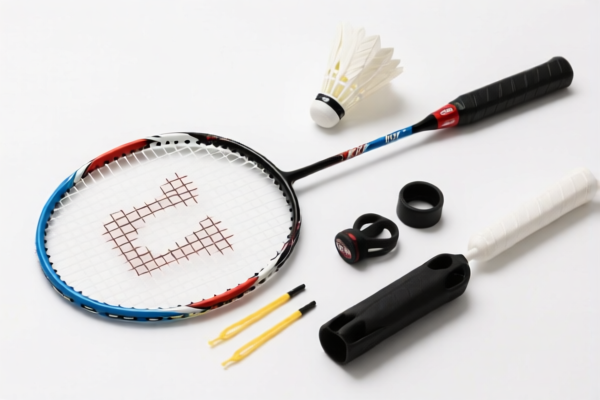| HS Code | Official Doc | Tariff Rate | Origin | Destination | Effective Date |
|---|---|---|---|---|---|
| 9506400000 | Doc | 35.1% | CN | US | 2025-05-12 |
| 9506910030 | Doc | 67.1% | CN | US | 2025-05-12 |
| 3916903000 | Doc | 61.5% | CN | US | 2025-05-12 |
| 3916905000 | Doc | 60.8% | CN | US | 2025-05-12 |




Swing Exerciser
A swing exerciser is a fitness device designed to improve core strength, flexibility, and coordination through rotational and swinging movements. It typically consists of a padded bar or handles attached to a rotating base, allowing users to perform a variety of exercises targeting the abdominal muscles, obliques, back, and shoulders.
Material
Swing exercisers are commonly constructed from:
- Steel: Provides a robust and durable frame for stability and long-term use.
- Padding: Typically made of foam or vinyl, covering the handles and contact points for user comfort and grip. Higher-end models may use more dense and durable padding.
- Plastic: Often used for the base and rotational components, providing lightweight and smooth movement.
- Rubber/PVC: Used for feet or base coverings to prevent slipping and protect flooring.
Purpose
The primary purposes of using a swing exerciser include:
- Core Strengthening: Engaging abdominal and oblique muscles through rotational movements.
- Flexibility Improvement: Increasing range of motion in the torso and back.
- Coordination Enhancement: Developing balance and coordination through controlled swinging motions.
- Posture Correction: Strengthening back muscles to support proper posture.
- Calorie Burning: Providing a cardiovascular workout when used at a higher intensity.
Function
Swing exercisers function by allowing users to perform a range of rotational exercises. The rotating base enables free movement in multiple directions, challenging the core muscles to stabilize the body while maintaining control. Resistance is often provided through body weight and momentum, though some models incorporate adjustable resistance mechanisms.
Usage Scenarios
- Home Workouts: Suitable for use in a home gym environment due to its compact size and ease of use.
- Rehabilitation: Used in physical therapy to aid in core stabilization and recovery from back injuries (under professional guidance).
- Fitness Classes: Incorporated into group fitness routines for core training.
- Office Use: Some compact models are designed for use in office environments to promote movement and combat sedentary lifestyles.
Common Types
- Rotating Disc Swing Exercisers: Feature a flat disc base that allows for 360-degree rotation. These are typically more affordable and are suitable for beginners.
- Handle-Based Swing Exercisers: Include padded handles attached to a rotating base, allowing for a wider range of exercises.
- Adjustable Resistance Swing Exercisers: Incorporate resistance mechanisms, such as springs or adjustable weights, to increase the intensity of the workout.
- Compact Swing Exercisers: Smaller, portable models designed for limited space or travel.
- Digital Swing Exercisers: Include built-in displays to track repetitions, time, and calories burned.
The declared goods, “swing exerciser”, fall under articles and equipment for general physical exercise, gymnastics, athletics, or outdoor games. Here's a breakdown of relevant HS codes based on the provided information:
- 9506400000: This HS code covers articles and equipment for table-tennis, and parts and accessories thereof. While a swing exerciser isn’t specifically table-tennis equipment, it is exercise equipment, making it a potential match. The tax rate is a base tariff of 5.1%, with no additional tariff currently, but a 30% additional tariff will apply after April 2, 2025, resulting in a total rate of 35.1%.
- 9506910030: This HS code covers articles and equipment for general physical exercise, gymnastics, or athletics; parts and accessories thereof, specifically categorized as 'Other'. This is a more direct fit for a swing exerciser. The tax rate is a base tariff of 4.6% plus a 7.5% additional tariff, with a 30% additional tariff applying after April 2, 2025. Additionally, if the exerciser is made of steel or aluminum, a 25% additional tariff applies, bringing the total rate to 67.1%.
- 3916903000: This HS code covers monofilament of which any cross-sectional dimension exceeds 1 mm, rods, sticks and profile shapes, whether or not surface-worked but not otherwise worked, of plastics. If the swing exerciser incorporates plastic components meeting these specifications (e.g., plastic ropes or structural elements), this code may be relevant. The tax rate is a base tariff of 6.5% plus a 25% additional tariff, with a 30% additional tariff applying after April 2, 2025, resulting in a total rate of 61.5%.
- 3916905000: This HS code covers monofilament of which any cross-sectional dimension exceeds 1 mm, rods, sticks and profile shapes, whether or not surface-worked but not otherwise worked, of plastics. Similar to 3916903000, this applies if the exerciser uses qualifying plastic components. The tax rate is a base tariff of 5.8% plus a 25% additional tariff, with a 30% additional tariff applying after April 2, 2025, resulting in a total rate of 60.8%.
Important Considerations:
Regarding HS code 9506910030, if the swing exerciser is manufactured from steel or aluminum, a 25% additional tariff will be applied in addition to the base and standard tariffs.
Regarding HS codes 3916903000 and 3916905000, the applicability depends on the material and dimensions of any plastic components used in the exerciser.
Customer Reviews
No reviews yet.